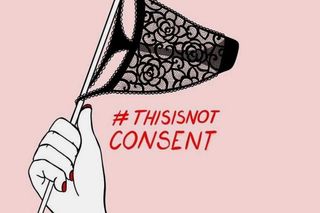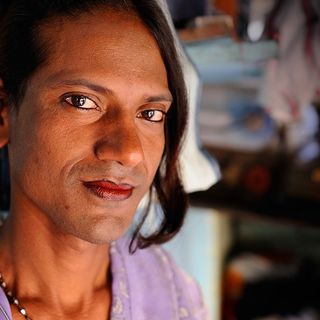
Re‑examining the Grey Areas of Consent in the Age of #MeToo and Dating Apps
Hook-up culture might liberate women but it also poses risks when definitions of consent vary.

Sexual consent, although seemingly straightforward, often involves the exchange of cues that are often easily misinterpreted. Online dating apps just add one more layer of uncertainty to the issue, and as this recent wave of #MeToo accusations has shown us, we need to update the way we indicate and perceive consent.
We can define consent as a feeling of willingness to engage in sexual activity, through either verbal or nonverbal communication. Both the inward (voluntary willingness) and outward (communication to another person) manifestations of willingness are key dimensions of consent. But despite the vast amount of literature on sexual coercion, rape and the absence of consent, there is a very little research on how sexual consent is perceived and understood in context.
In a study conducted by Terry Humphreys on the perceptions of sexual consent, situational and participant factors were examined to understand their influence on how people interacted with each other. One of those factors was the history and the duration of the relationship, and Humphreys found that as the length of an intimate relationship grows, more formal sexual negotiations early in relationships give way to more informal, casual, and idiosyncratic ways of signalling interest in sexual activity. It was also found that men perceived the scenarios as more consensual, acceptable, and clear, regardless of relationship experience.
In the growing hook-up culture, thanks to dating apps that have revolutionized the dating landscape in India, how do individuals perceive sexual consent given that the familiarity factor is out of equation?
Studying consent
In an earlier research study, conducted by David S Hall on the consent for sexual behavior, it was found that most sexual activities progressed without overt consent being communicated and, if consent was given, it was usually granted nonverbally. He also found that the strategies used to initiate sexual activity, up to and including intercourse, are more often communicated nonverbally than verbally. Of course, in the case of nonverbal communication, there’s a greater likelihood of one person misreading the other’s willingness, or lack of it. Worryingly, it seems that men are more likely to use and expect nonverbal communication than women.
During his research study, Humphreys had also found that young adults, with a common understanding of what sexual consent means, were divided on the necessity of establishing consent using explicit, verbal communication. Women, more than men, and individuals without sexual intercourse experience, as opposed to the ones with intercourse experience, stressed the importance of consent and preferred a more explicit approach to obtaining it. A possible explanation for this is that someone who has already experienced intercourse would have a more realistic idea of the contextual nuances of sexual situations and the potential awkwardness of verbal consent.
Read more: Why Talking to Kids About Consent Is Necessary — And Easy
But the problem with relying on nonverbal behavior cues to indicate sexual communication is that it has the potential for misinterpretation, which then can lead to sexual coercion, or worse. While understanding these behaviors, it’s also important to realize the role that society plays in assigning certain stereotypes about how men and women should interact. The ‘social scripting’ theory shows how men and women let their internalized gender roles guide all their behaviors, including sexual behavior. According to social scripting, men are socialized to be the initiators of sexual encounters and actively push for sexual intimacy, while women are socialized to be the guardians of their sexuality, which necessitates the setting of limits. This dangerous idea — that men must be the initiators and women will always be slightly unwilling to engage in sexual activity – is used to excuse men who, knowingly or unknowingly, coerce women into sexual activity.
Swiping right
Dating apps like Tinder, Bumble, and OKCupid, have enabled the young generation to grasp new-found sexual freedoms in a revolutionary way. In a growing hook-up culture of swiping, clicking, ticking possible “matches” online, it becomes all the more important that both men and women are educated about the nuances of consent. There are various ways people can signal sexual consent, whether its verbal, direct nonverbal, indirect verbal, indirect nonverbal, and no response. This further complicates the equation between individuals and their perceptions of sexual consent, making it even more essential to update the way we perceive consent in a new world of social encounters that people often take for granted.
While the arrival of these apps have somewhat liberated women from the stigma attached to casual sex, they have also opened up a Pandora’s box of newer problems such as cross-platform harassment and catfishing. Although there is no official record of the number of people who have been sexually harassed on these dating apps, it is important to understand that women are disproportionately affected by sexual harassment as the abuse is more likely to be gendered, sustained, sexualized, and linked to offline violence.
Read more: Let’s Start Treating Online Harassment As What It Really Is — A Crime
Just like offline, women also feel uncomfortable in reporting abusive matches online because they do not see it as useful or as taking meaningful action and that they cannot see what happens after they report. The danger with social media is that it has skewed our understanding of danger, since you’re not going out to a place that is potentially or conventionally supposed to be dangerous. But the danger is coming to you through your phone. What these apps need to be working on is to have a regulatory authority taking accountability for such harassment through their platforms and have clear policies in place for such cases.
With the surge of the #MeToo movement online and the kind of accounts of sexual harassment that have come to the fore, it is important to collectively introspect how to resolve the anger and resentment arising out of such allegations without either polarizing the consent debate or further exacerbating existing differences in gender roles and norms in society. While social media can be useful in uncovering just how widespread sexual harassment/violence against women is, we often come off knowing relatively little about how to remedy the core problems contained therein.
The fundamental condition of gender inequality for women and the violent, harmful, and controlling nature of toxic masculinity creates a power imbalance leading to this kind of sexual violence. Therefore, it becomes even more important for social media to be harnessed to educate and sensitize men and boys not only for the lives of women and girls but also for their own lives. Hyper-masculinity, a set of extreme practices or behaviors of dominance, violence, and other high-risk behaviors, has the potential to be harmful both to men and to others.
Only by breaking down stereotypes of hyper-masculinity can we change the socio-cultural role of masculinity in our society. We need to allow for the identities of young men to be comparatively more fluid and complex, by constructing alternative ideas of masculinity that are not necessarily marked by negative behavior. Social media and online resources can play a huge role in sparking conversations about issues around sex, sexuality, gender, violence, power, etc. There are also several toolkits and training manuals available online that focus on engaging boys and men in gender transformation.
With all kinds of anger and revolt on social media, and newer forms of gender-based sexual violence, the need of the hour is to understand the nuances of communication that takes places between genders, and redistribute power between them.
Sumati Thusoo is a Research Author at the department of sociology at Monk Prayogshala, a not-for-profit research organization based in Mumbai. She is a trained feminist social worker and a development practitioner who has worked across various themes of gender justice, child rights and anti-trafficking. Her research interests lie in social anthropology, culture theory, and South Asian diaspora intersecting with postmodern feminism.
Related


Rajya Sabha Passes Transphobic Transgender Persons Bill
